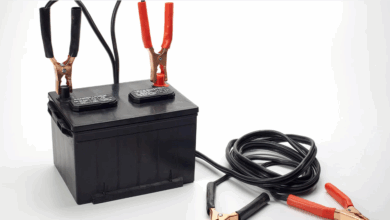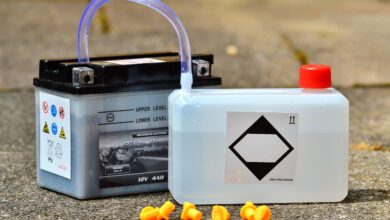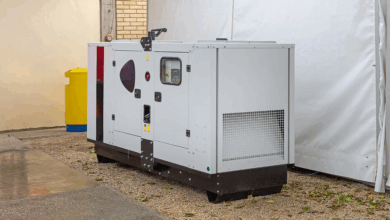Home Power Backup Picks

Powering Through Outages: Your Comprehensive Guide to Home Power Backup Picks
In today’s increasingly unpredictable world, relying solely on the grid for uninterrupted power is becoming a gamble many homeowners are unwilling to take. Severe weather events, aging infrastructure, and unexpected emergencies can plunge neighborhoods into darkness without warning, bringing modern life to a jarring halt. Beyond mere inconvenience, extended power outages can lead to spoiled food, loss of heating or cooling, inability to work from home, compromised security systems, and even dangerous situations for those relying on medical equipment.
This is where home power backup solutions step in, offering peace of mind and essential functionality when the lights go out. But with several options available, choosing the right system for your needs can feel overwhelming. This guide will explore the most popular home power backup picks, helping you understand their strengths, weaknesses, and who they’re best suited for.
Why Backup Power Matters Beyond Comfort
While comfort (keeping the lights on, watching TV) is a significant factor, backup power serves more critical purposes:
- Safety and Security: Maintaining power for lights, security systems, and communication devices is vital during an emergency.
- Food Preservation: Preventing hundreds of dollars worth of food from spoiling in refrigerators and freezers.
- Essential Appliances: Keeping crucial systems like sump pumps, well pumps, and crucial kitchen appliances running.
- Medical Needs: Ensuring critical medical equipment (like oxygen concentrators or CPAPs) remains operational.
- Maintaining Productivity: For those who work from home, backup power is essential to stay connected and productive.
Exploring Your Options: The Main Types of Home Power Backup
Home power backup solutions generally fall into three main categories, each with its own mechanism, benefits, and drawbacks:
-
Portable Generators:
- What they are: These are typically gasoline, propane, or dual-fuel powered engines that produce electricity. They are manually started and require extension cords or a manual transfer switch (installed by an electrician) to power specific circuits in your home.
- Pros:
- Affordability: Generally the least expensive upfront option.
- Portability: Can be moved to different locations or taken on trips (camping, tailgating).
- Flexibility: Can power specific items via extension cords or designated circuits.
- Cons:
- Manual Operation: Requires manual starting, refueling, and connecting.
- Noise: Can be very loud, which can be disruptive and may bother neighbors.
- Fuel Storage: Requires storing potentially flammable fuel.
- Safety Risks: Produces carbon monoxide; must be operated outdoors well away from windows and doors.
- Limited Power: Often sufficient for essential circuits or appliances, but rarely enough for a whole large house simultaneously unless buying a very large, less portable unit.
- Weather Dependent: Must be protected from rain and snow while operating.
- Best For: Budget-conscious homeowners, those who need power for only a few critical items during relatively infrequent or short outages, or those who also need a portable power source for other uses.
-
Standby Generators:
- What they are: Permanently installed outside your home, typically fueled by natural gas or propane. They are wired directly into your home’s electrical system via an automatic transfer switch (ATS). When grid power is lost, the ATS detects it, signals the generator to start, and automatically switches your home’s power source from the grid to the generator. When grid power returns, the ATS switches back and the generator shuts off.
- Pros:
- Automatic Operation: No manual intervention required – they start automatically, even when you’re not home.
- Whole-House Power: Can be sized to power an entire home, including HVAC systems, large appliances, and electronics.
- Convenience: Seamless transition during an outage.
- Reliable Fuel: Natural gas or large propane tanks offer extended run times without frequent refueling.
- Cons:
- High Upfront Cost: Significantly more expensive than portable generators, including the unit, ATS, and professional installation (gas line, electrical).
- Noise: While often quieter than portable units, they still produce noticeable noise.
- Maintenance: Requires regular scheduled maintenance (like a car engine) to ensure reliable operation.
- Installation Complexity: Requires professional installation by qualified electricians and potentially plumbers/gas fitters.
- Best For: Homeowners who want seamless, automatic backup for extended periods, those who need to power their entire home or many circuits, and those for whom convenience and reliability are top priorities.
- Battery Backup Systems (Energy Storage Systems):
- What they are: Large battery packs, often resembling sleek cabinets, installed in a garage, basement, or outside. They store energy, typically charged from the grid, solar panels, or both. When the power goes out, an inverter converts the battery’s DC power to AC power for your home. They often include an automatic transfer switch for seamless power during outages.
- Pros:
- Clean and Quiet: Operate silently and produce no emissions.
- Instant Power: Provide power almost instantaneously, preventing even brief interruptions (like a large UPS).
- Solar Integration: Highly compatible with solar panel systems, allowing you to store excess solar energy for use at night or during outages.
- Low Maintenance: Fewer moving parts than generators, requiring less maintenance.
- Potential Grid Services: Some systems can interact with the grid (if allowed by your utility) for potential savings or credits.
- Cons:
- High Upfront Cost: Can be as expensive as or even more expensive than standby generators, especially when including installation and potentially solar.
- Limited Run Time: While powerful, the duration they can power a home depends on the battery capacity and the amount of power being drawn. Whole-house backup for extended periods requires significant, expensive capacity.
- Doesn’t Generate Power: Unlike generators, they only store it. Once depleted, they need grid or solar power to recharge (unless paired with another generation source).
- Requires Inverter: The system needs a compatible inverter to convert DC to AC power for household use.
- Best For: Environmentally conscious homeowners, those with solar panels looking to maximize their investment and gain backup, those who prioritize quiet and clean operation, or those in areas with shorter, more frequent outages who don’t need days of whole-house power.
Choosing the Right Fit: Key Considerations
Selecting your home power backup pick requires evaluating your specific needs and circumstances:
- Determine Your Power Needs: This is the most crucial step. What circuits or appliances must run during an outage?
- Lights? Refrigerator/Freezer? Sump Pump? Well Pump? Furnace/AC fan? Medical equipment? Electronics (computers, TV)?
- Find the wattage requirements for these items. Note that motor-driven appliances (refrigerators, pumps, HVAC fans) have a much higher starting wattage (surge) than running wattage. Your backup system needs to handle these surges. A qualified electrician can help you perform a power audit.
- Budget: Portable generators are the entry point, while standby generators and battery systems represent significant investments.
- Fuel Availability and Storage: Do you have natural gas? Can you easily store gasoline or propane? How much fuel would you need for a typical outage duration?
- Run Time: How long do typical outages last in your area? Do you need power for a few hours, a day, or potentially a week?
- Noise Restrictions: Are there noise ordinances in your neighborhood? Is the generator’s noise level a significant concern for you or your neighbors?
- Installation Location: Do you have space for a permanent generator outside, or a battery system inside/outside? Are there local regulations regarding placement?
- Maintenance Commitment: Are you comfortable performing basic maintenance (oil changes, checks) on a generator, or do you prefer a system with less required upkeep?
- Environmental Concerns: Do you prefer a cleaner, emission-free solution like battery storage?
Installation and Safety
Regardless of your choice, proper installation and safety protocols are paramount.
- Professional Installation: For standby generators and battery systems, professional installation by certified technicians (electricians, plumbers/gas fitters) is essential for safety, code compliance, and optimal performance.
- Portable Generator Safety: Never run a portable generator indoors, in a garage, or near windows and doors. Ensure adequate ventilation. Use carbon monoxide detectors in your home. Use appropriate heavy-duty extension cords or a professionally installed manual transfer switch.
FAQs About Home Power Backup
- How much power (wattage) do I really need?
Add up the running wattage of the essential items you want to power simultaneously. Then, identify the item with the highest starting wattage and add that to the running wattage total of the other items. This gives you a rough minimum size. Consult an electrician for an accurate assessment. - Generator vs. Battery – which is better?
It depends on your priorities. Generators (especially standby) offer longer run times for whole-house power, using readily available fuels. Batteries offer quiet, clean, instant power, are great with solar, and require less maintenance but have limited capacity and don’t generate power themselves once depleted. - Can I install a home backup system myself?
For safety and code compliance, portable generators should be used with heavy-duty cords or a manual transfer switch installed by an electrician. Standby generators and battery systems require complex electrical and potentially fuel line work and must be installed by qualified professionals. - How long will my backup system run during an outage?
For generators, this depends on fuel capacity (size of tank/access to natural gas) and the load (how much power you’re drawing). For battery systems, it depends on the battery’s storage capacity (measured in kilowatt-hours) and the load. Running only essential items extends run time significantly. - Are home backup systems noisy?
Portable generators are typically the loudest. Standby generators are quieter but still noticeable. Battery backup systems operate silently. - What’s the cost range?
Portable generators can range from a few hundred to several thousand dollars. Standby generators typically cost $5,000 to $20,000 or more installed. Battery backup systems can range from $10,000 to $30,000+ installed, depending on capacity and integration.
Conclusion
Investing in home power backup is investing in security, comfort, and resilience. Whether you choose the affordability and flexibility of a portable generator, the seamless, whole-house power of a standby generator, or the quiet, clean efficiency of a battery storage system, having a plan for when the grid goes down is increasingly important.
By carefully assessing your power needs, budget, location constraints, and desired level of convenience, you can select the home power backup pick that best ensures your household can weather the storm – literally and figuratively – and keep your lights on when the rest of the neighborhood is dark. Don’t wait for the next outage; start planning your power security today.




![How to Bypass CO Sensor on Generator – [4-Step Safety Guide]](https://www.generator411.com/wp-content/uploads/2025/08/co-sensor-on-generator-390x220.png)